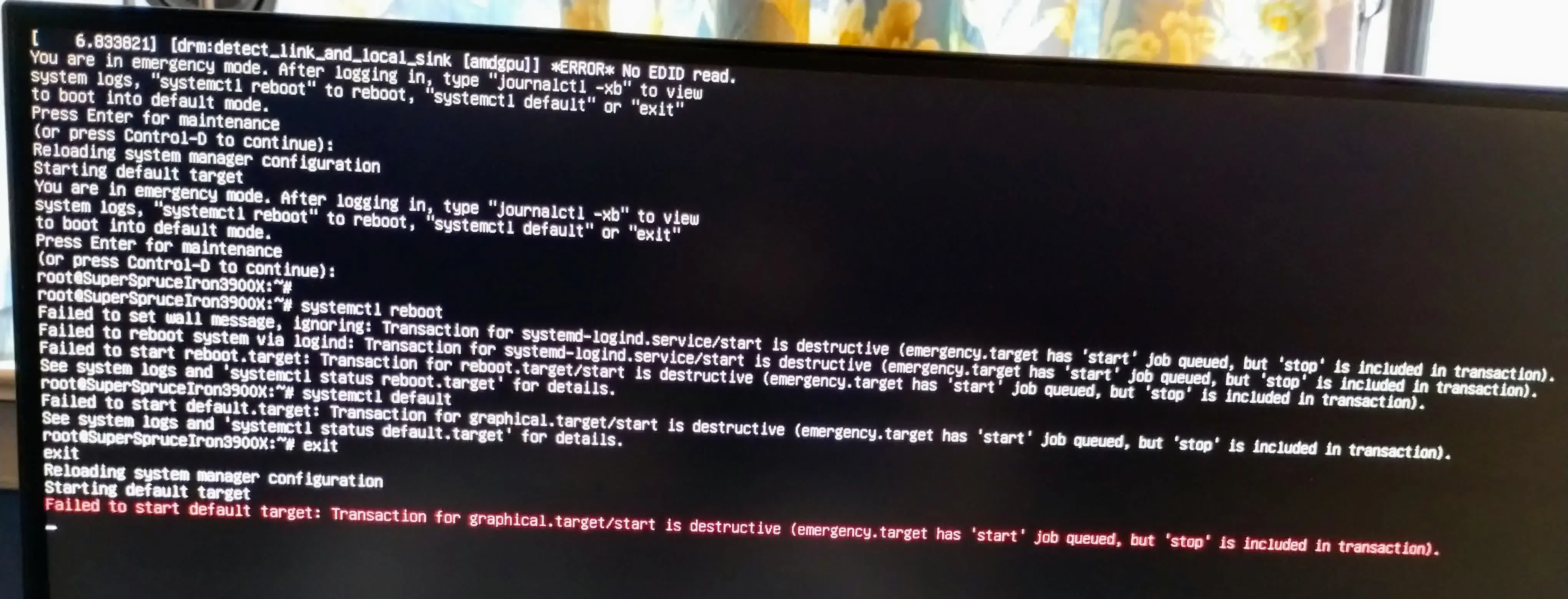this post was submitted on 21 Dec 2023
56 points (91.2% liked)
Linux
48287 readers
619 users here now
From Wikipedia, the free encyclopedia
Linux is a family of open source Unix-like operating systems based on the Linux kernel, an operating system kernel first released on September 17, 1991 by Linus Torvalds. Linux is typically packaged in a Linux distribution (or distro for short).
Distributions include the Linux kernel and supporting system software and libraries, many of which are provided by the GNU Project. Many Linux distributions use the word "Linux" in their name, but the Free Software Foundation uses the name GNU/Linux to emphasize the importance of GNU software, causing some controversy.
Rules
- Posts must be relevant to operating systems running the Linux kernel. GNU/Linux or otherwise.
- No misinformation
- No NSFW content
- No hate speech, bigotry, etc
Related Communities
Community icon by Alpár-Etele Méder, licensed under CC BY 3.0
founded 5 years ago
MODERATORS
you are viewing a single comment's thread
view the rest of the comments
view the rest of the comments

Try updating your DM / your entire system from the emergency mode.
How do I get into emergency mode?
The Shell where you typed "systemctl reboot" and "exit".
If you are running KDE neon, try "apt update" and "apt upgrade". If It doesn't work do "sudo apt update" and "sudo apt upgrade"
I ran apt update and some index files failed to download. It was just a warning though.
But systemctl reboot and exit still fail the same way.
Before the "systemctl" command: try removing the GPU and booting it up without the GPU If it works, you can skip the "systemctl" commands
Run "journalctl --lines 200" and send photos of output.
NOTE: This is all of the logging of the computer, and it's long (that command select the last 200 entries), so you might have to scroll down using the PageDown key (or arrow down) in order make the photos of everything
The RAID1 seems to be failing according to that screenshot. That breaks the "Local File Systems" task and since quite a lot of things tend to depend on that, many things usually end up failing in an annoying cascade failure. It's also failing with a timeout instead of a strict error, which is odd.
Either way, I'd try commenting that line for
/mnt/raidin /etc/fstab for now and seeing if that makes the system boot. It's possible thatjournalctl -u dev-md0.serviceorsystemctl status dev-md0.servicemight tell you more, but it's 50/50 if it'll be anything useful.How do I edit /etc/fstab if I'm not even able to boot the system? Or am I already booted in the system, just in a CLI environment?
You're most likely booted, otherwise you might need a live USB. Hopefully, the system isn't in read-only mode. What I'd recommend doing is:
To make a copy once. Then,
nano /etc/fstabto run nano, a basic CLI editor. You can use the arrow keys to navigate and type freely in it. The hints like^Oshown on the bottom mean ctrl+o.You'd use the arrow keys to go down to the line that probably says
/dev/md0 /mnt/raid morecrap, put a#in front of it, press ctrl+w then enter to save. If that worked, ctrl+x to exit and try arebootagain.Obviously can't promise this is "the" error preventing the system from booting, but it's generally a good idea to disable broken stuff like this to get the system working again, then fix it from there. Hopefully, this does the trick. Your RAID setup will not be activated on reboot after you do this but it's not going to permanently delete data or anything.
I used nano to edit /etc/fstab and commented out the last line and the system booted into GUI mode!
This leaves me with some questions:
Looks like you need to look for messages about /dev/md0 and why it may be timing out. Also maybe add nofail to the raid entry in fstab so you can still boot if the root fs is not on it and it fails ( is root on NTFS possible or good?)
I don't think the edid message is a problem, just an artifact of your monitor not talking to your video card?
Maybe NTFS is the problem, I think it needs special options to automatically remove the dirty bit and replay the journal
Note: The computer has an SSD where the OS lives and two HDDs, sda and sdb, set up in RAID 1 because the computer is 3.5 years old.